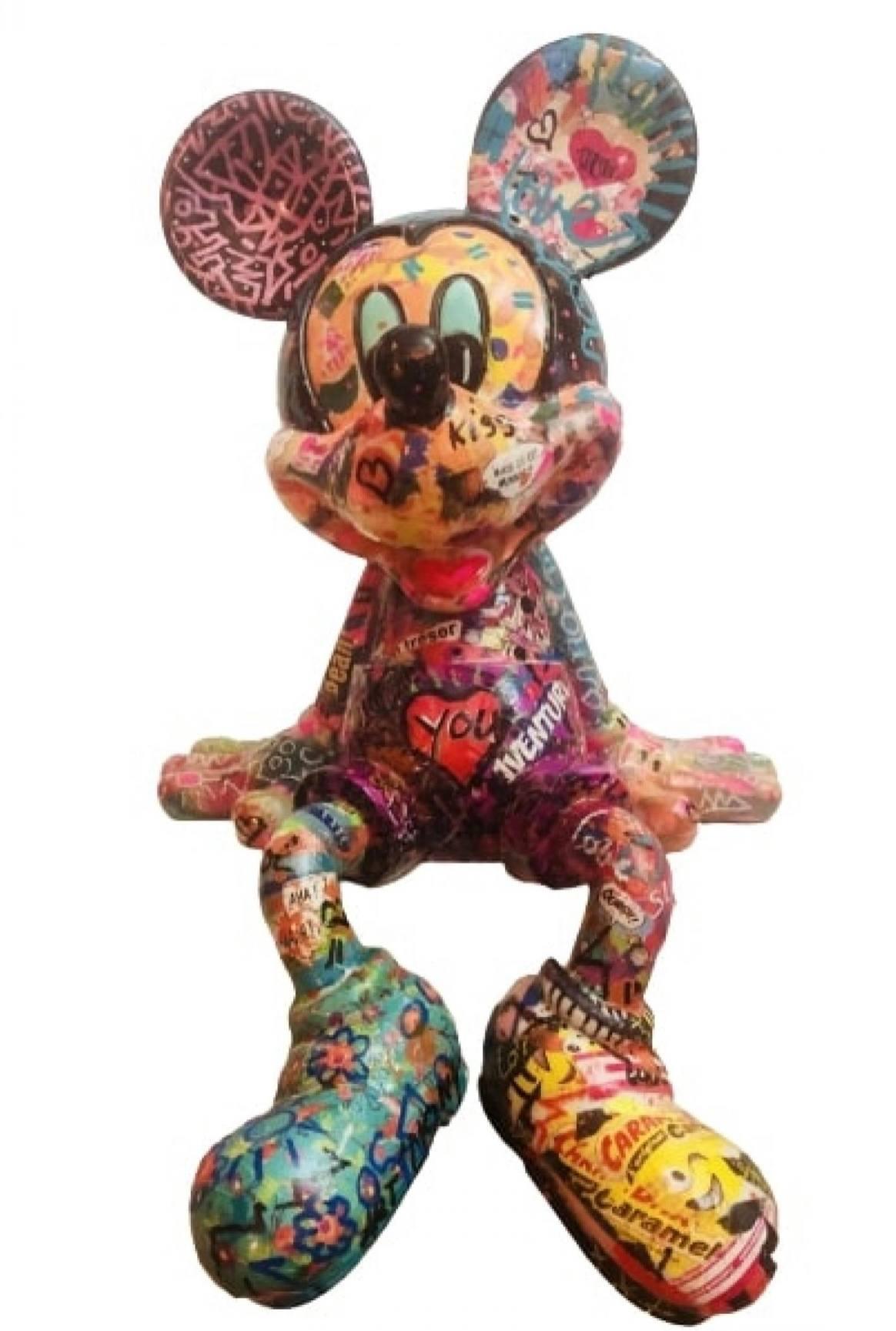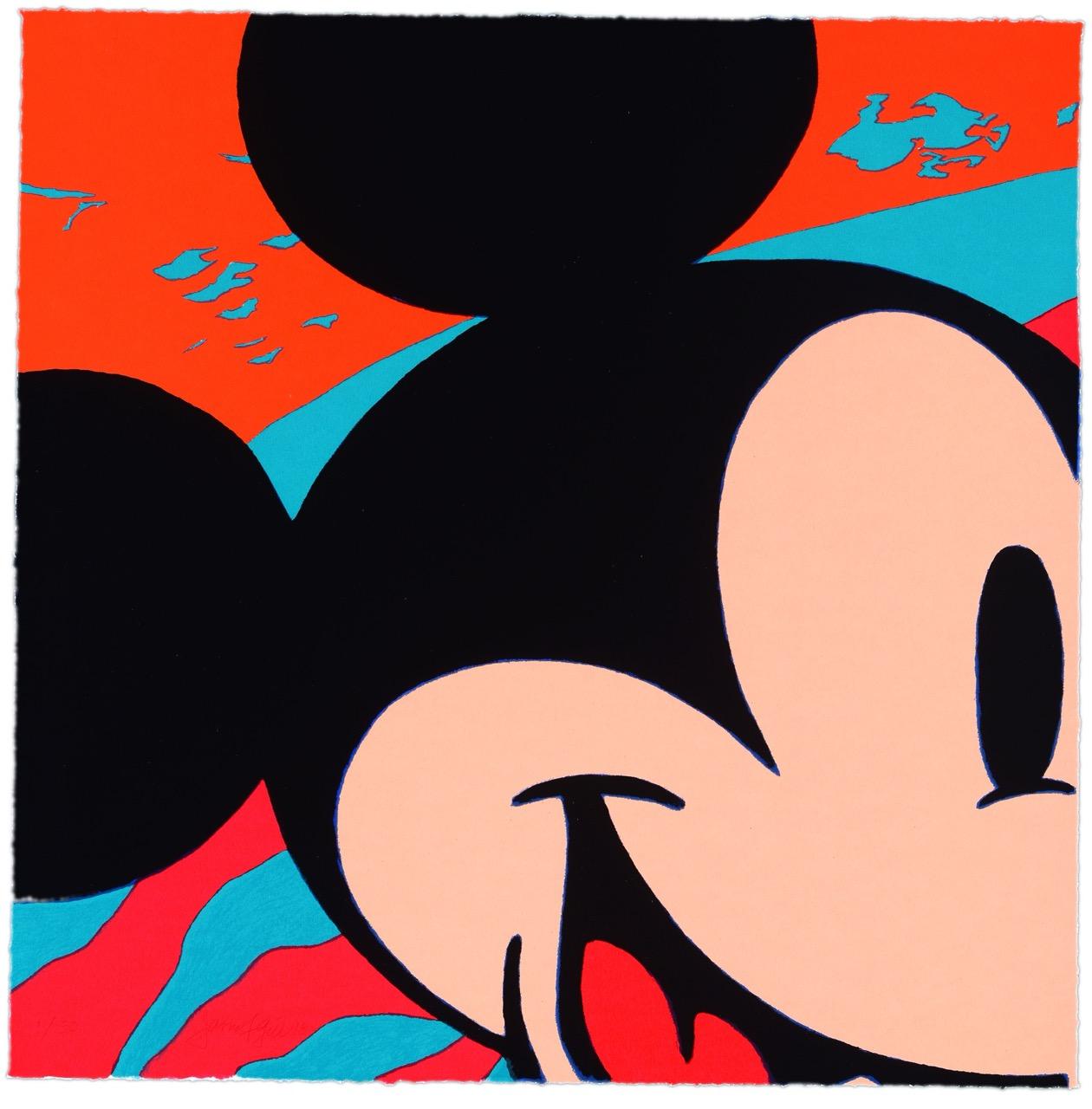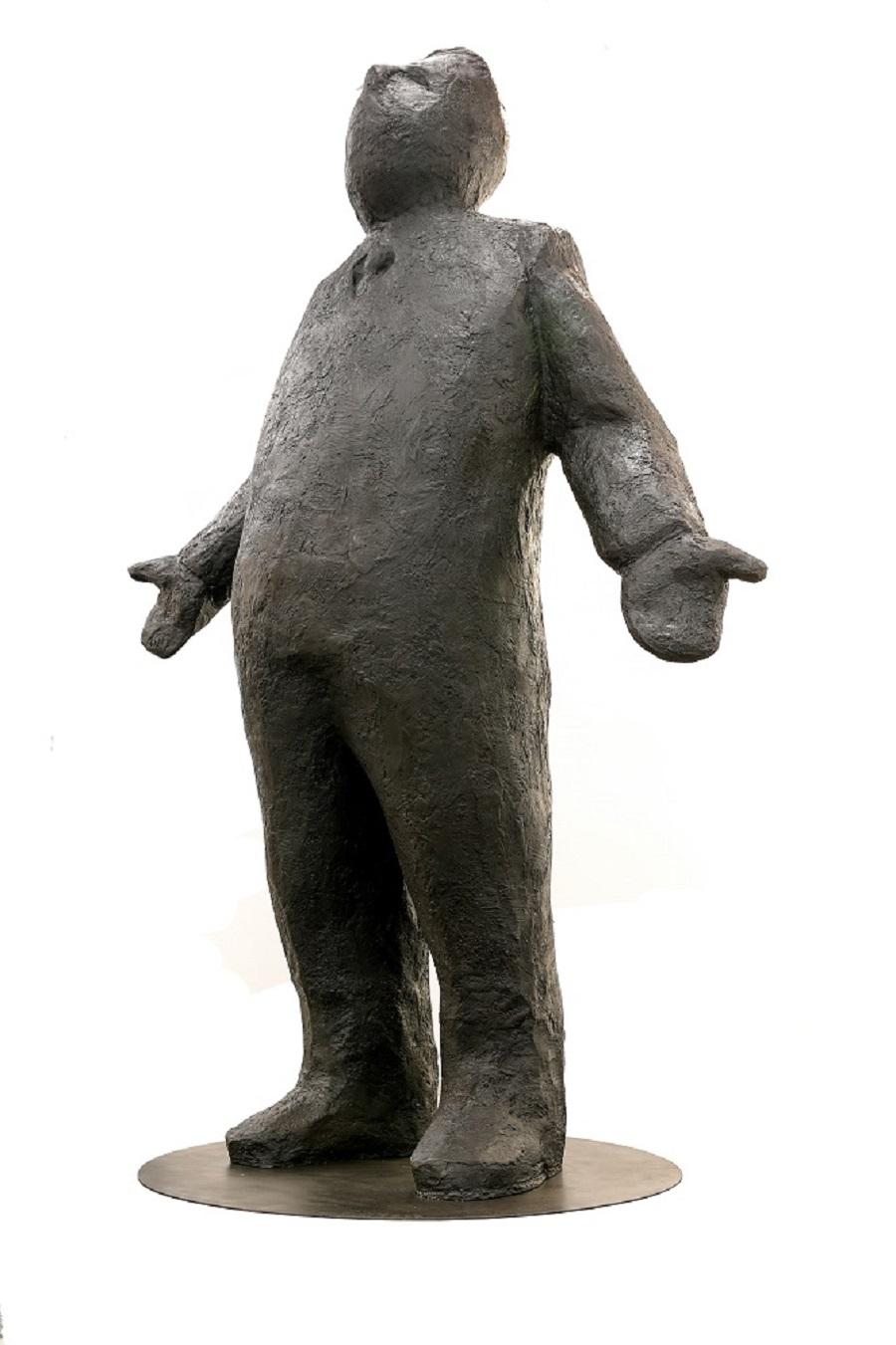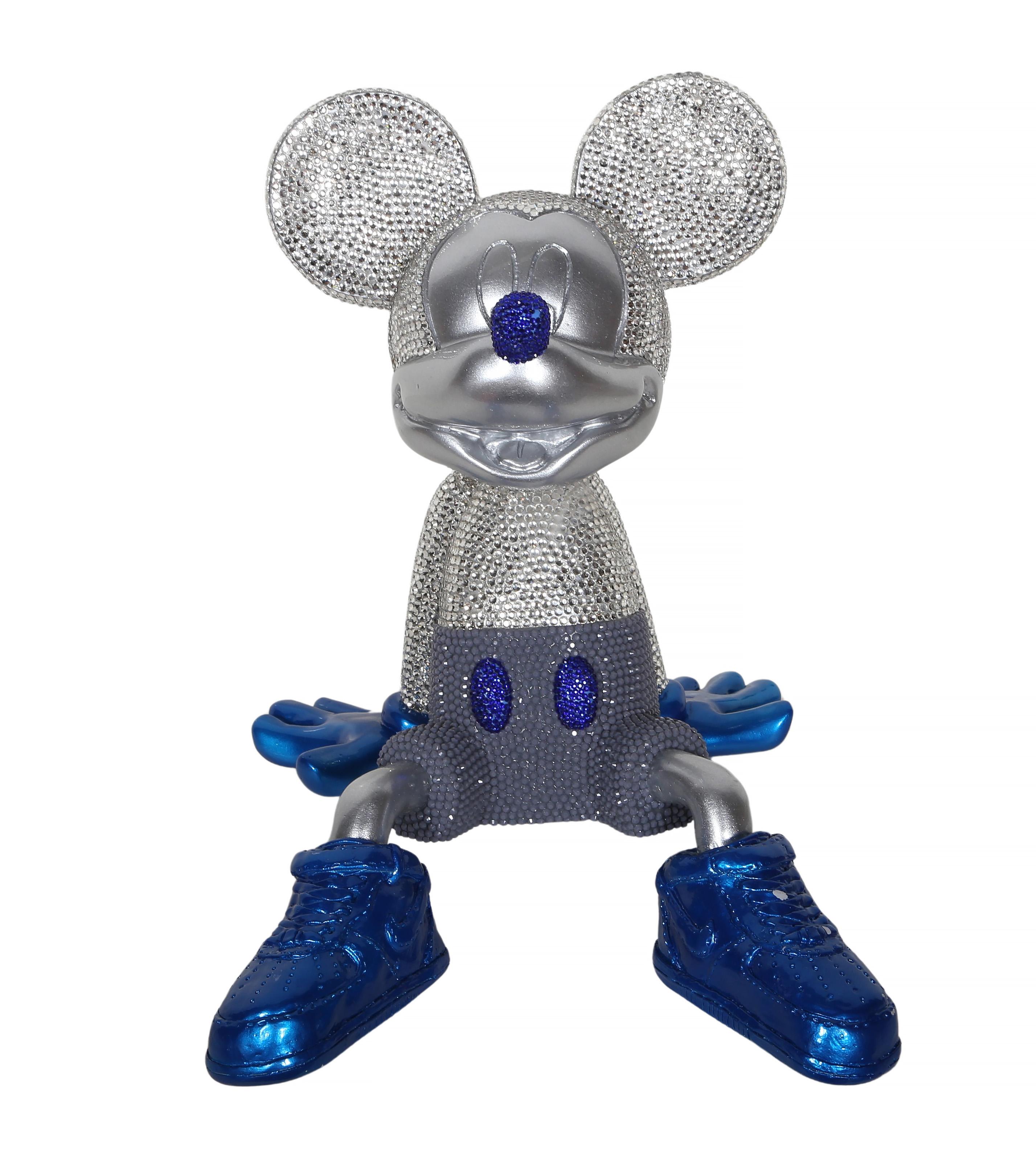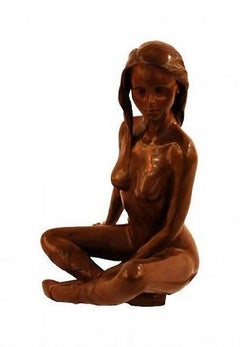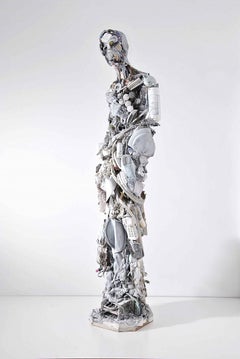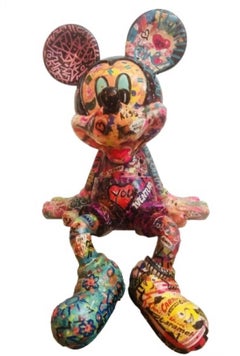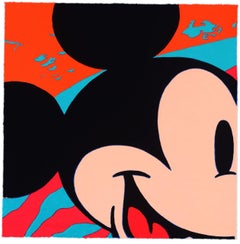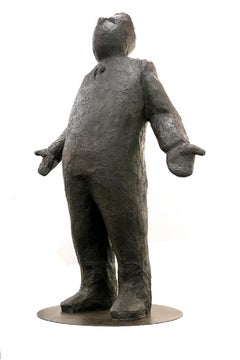Want more images or videos?
Request additional images or videos from the seller
1 of 2
Carlos TiradoAfter Mickey
$3,900
£2,965.32
€3,416.10
CA$5,544.78
A$6,026.22
CHF 3,184.62
MX$72,904.21
NOK 39,662.17
SEK 37,463.39
DKK 25,505.02
About the Item
Carlos J. Tirado (born on April 3, 1964 in Caracas, Venezuela) is an artist, painter and sculptor who has developed a very personal and precise line of work linked to Neo-Pop art. With plenty of personal art exhibitions, Tirado has participated in numerous collective exhibitions, receiving different awards such as “III Premio de Escultura” del Certamen Aires de Córdoba in 2004 and other recognitions, among them, at the Venezuelan Embassy in DC (2005), and the X Latin Art Festival of Atlanta (2005).
Childhood
Tirado grew up in an upper-middle-class family environment. His inclination for the arts started from an early age. At 8 years old, he was already experimenting with tridimensional forms, creating molds out of cast lead from pieces previously gathered on the streets. These first artistic experiences led by his inquisitive nature, provided the ground to continue exploring the possibilities with different materials like wood, waste and plaster. His childhood games were centered around painting and sculpting, which played an important role that ranged from recreational to aesthetics.
When Tirado turned 12 years of age, his parents agreed for him to attend private art classes with professor Javier Hernandez in Caracas. Later on, he realized that Art was a profession that required investment in materials, reason that led him to work at a furniture store painting landscapes and figurative art to decorate the exhibit room. He created numerous paintings of Caracas’ famous mountain: El Avila, and other art pieces that not only served as a source of income, but more importantly, led him to deepen his figurative expression.
In 1985, he started drawing comic sets for a renowned newspaper El Diario de Caracas, alongside Jorge Blanco. This is when “Alfredo” was born, a cartoon character that has been part of Tirado all of his life. “Alfredo” has been featured in other newspapers like El Venezolano (in Miami, Florida). His presence in El Diario de Caracas was the beginning of a series of other comic characters that later were chosen by private companies as images for personal improvement and corporate safety programs.
After finishing High School, Tirado decided to study Art. However, that was not part of his parents’ plan, to which he agreed to study Law at the Universidad Santa Maria in Caracas at night, at his parents request, while attending Art School at the Escuela Cristobal Rojas during the day. He graduated from Law School in 1991. His art studies have never stopped.
Artistic Career
He moved to South Florida and started working with materials that were very different from what he used in Venezuela, which in some cases were very restrictive and different: the river sand found in his country was substituted in his art work for a fine, white sand from ground coral, that resulted in a totally different outcome from the art pieces created in his native country.
From this point on, a new series of Black and White artwork is born. With the use of coral sand mixed with black resin over different objects, Tirado recreated the objects and people found in the ruins of Pompeii, covered in ashes and lava, soaked by time. These pieces have a calcified look with an intense black hue that resembles raw petroleum. This art evokes the look of a city that could be covered in ashes from a Volcano, and at the same time, it is a metaphor for Caracas and its oil-covered society.
The Antipixel
Tirado agrees that he feels an attraction towards Pop-art . One of his major impulses has been to humanize those mass-reaching characters like comic characters, with common problems as any individual living in an everyday environment. Nevertheless, his major contribution has been his personal language representing these themes, which indeed resembles Pop Art, but with a twist that Tirado has been able to accomplish after years of investigation and research. In search of his own expression, he decided to recycle an already existing man-made material, changing its original purpose.
He opts to use an approximate 600-pantone-color chart from exterior paints at home improvement stores. The strategic combination of these samples based on the principles of collage: cutting and pasting produce a marvelous pixel-like image of outstanding beauty and allure. In the digital realm, a pixel is the smallest chromatic unit of an image. In Tirado artistic expression this concept is inverted creating an interesting game as a result of his investigation. He manually cuts one-color pieces, positions and pastes them over the canvas, looking to create a desired image. In some instances, he applies small touches of color over the canvases. This technique, also known as “anti-pixel” by some art critique, simulates the pixelated look of an over-zoomed digital picture; however, when viewed in detail, is clear that the process is very different in Tirado work, as he begins breaking the digital logic: instead of taking the image to its minimum chromatic expression, he builds off that minimum expression. In fact, they are not realistically minimal since the materials (paint samples) used by the artist measure approximately 10 x 10 cms.
Using this technique, Tirado has created portraits of internationally recognized characters (presidents, renowned politicians, and artists) and pop culture icons (Marilyn Monroe, Monalisa, and cartoon characters, among others).
Tirado has participated in numerous collective art exhibitions, like Nobe 67 Art (Miami, 2008), Art Shangai 2004 and 2011, Florencia’s Biennal (2011), Mérida-Mexico Biennal, among others.
- Creator:Carlos Tirado (1965)
- Dimensions:Height: 18 in (45.72 cm)Width: 14 in (35.56 cm)Depth: 8 in (20.32 cm)
- Medium:
- Movement & Style:
- Period:
- Condition:
- Gallery Location:Atlanta, GA
- Reference Number:1stDibs: LU155528638642
About the Seller
5.0
Vetted Professional Seller
Every seller passes strict standards for authenticity and reliability
Established in 2008
1stDibs seller since 2021
18 sales on 1stDibs
Typical response time: 21 hours
- ShippingRetrieving quote...Shipping from: Atlanta, GA
- Return Policy
Authenticity Guarantee
In the unlikely event there’s an issue with an item’s authenticity, contact us within 1 year for a full refund. DetailsMoney-Back Guarantee
If your item is not as described, is damaged in transit, or does not arrive, contact us within 7 days for a full refund. Details24-Hour Cancellation
You have a 24-hour grace period in which to reconsider your purchase, with no questions asked.Vetted Professional Sellers
Our world-class sellers must adhere to strict standards for service and quality, maintaining the integrity of our listings.Price-Match Guarantee
If you find that a seller listed the same item for a lower price elsewhere, we’ll match it.Trusted Global Delivery
Our best-in-class carrier network provides specialized shipping options worldwide, including custom delivery.More From This Seller
View AllMickey
By Dominique MULHEM
Located in Atlanta, GA
Dominique Mulhem was born in Neuilly-sur-Seine June 13, 1952.
1975: Training at the Ecole Nationale Superieure des Beaux-Arts in Paris.
His painting refers to pop culture and art Ownership (art) by his inspiration. His technique was initially very pop art with the use of the bomb and stencils and more hyperrealistic with airbrushing to become a modern pointillism.
It was the first multimedia artist inventing in 1979 the holopeinture where he mixed paint holography. He had to work in the early 70s on the different 3D rendering techniques.
Beyond its highly representative form, his painting is primarily conceptual. The themes are the lives of people and things, without limit in treated subjects. All the work of Dominique Mulhem has the same theme : the concept of simultaneous vision. “The look from inside” as Pierre Restany said.
INTERNATINALES EXHIBITIONS:
GERMANY, CHINA, COLOMBIA, KOREA, DENMARK, EGYPT, SPAIN, UNITED STATES, GREECE, FRANCE, HUNGARY, ITALY, LUXEMBOURG, MONACO, RUSSIA, SWITZERLAND.
Dominique retrospective MULHEM 1972-2009, City of Asnieres-sur-Seine, France.
PRESENCE IN MUSEUMS :
Museum of Holography, Paris, France.
Hungarian National Museum, Budapest, Hungary.
Museum of Holography, Washington, USA.
Zamalek Museum and Arts Centre, Cairo, Egypt.
PRESENCE IN INTERNATIONAL EXHIBITIONS
Scarification :
Dominique Mulhem develops a suite of amazing concepts, suite, analysis, updating, revisiting any of these terms is false but none are true, the most appropriate choice would be thinking.
Thinking back on as thought to further examine refraction and reflection as to take another propagation velocity of the history of art. It shall submit the artwork to a movement infinite in space and time.
In the 80’s Portraits of Artists planned painters and sculptors between past and future by offering a three-dimensional holograms vision. In the 90s his imaginary museum, Pierre Restany wrote: “Dream Creatures to a dream before painting it’s more!” In “I should say, because my eye has been unable to separate things, to erase this simultaneous vision, to separate the two elements “.In the 2000s Zones, timeless journeys in the words and sentences of Guillaume Apollinaire’s poem.
Every decade Mulhem shares his world view. Today his scars challenge us on different characteristics of our society to the standardized culture object...
Category
21st Century and Contemporary Modern More Art
Materials
Mixed Media, Acrylic
$5,460
Untitled
Located in Atlanta, GA
Béatrice Bissara was born in 1972; the visit of museums and the atmosphere of the auction houses marked her childhood. After her studies in history of...
Category
21st Century and Contemporary Modern Figurative Sculptures
Materials
Bronze
$33,800
Untitled, 2017
Located in Atlanta, GA
Dario Tironi is the artist that evades the classic canons of Besharat Gallery's sculptures.
But we could not remain indifferent to his fantastic, incredi...
Category
21st Century and Contemporary Modern Figurative Sculptures
Materials
Found Objects
Toys: Horsie
By Carlos Tirado
Located in Atlanta, GA
Carlos J. Tirado (born on April 3, 1964 in Caracas, Venezuela) is an artist, painter and sculptor who has developed a very personal and precise line of work linked to Neo-Pop art. Wi...
Category
21st Century and Contemporary Modern Figurative Sculptures
Materials
Mixed Media
Eté
By Hugo Rivas
Located in Atlanta, GA
“Making sculpture is a very complex matter. A word added to a form, ultimately helping to better define it. And ultimately helping to understand the whole.”
Ugo Riva is probably the...
Category
21st Century and Contemporary Modern Figurative Sculptures
Materials
Bronze
$46,800
Un Monde Bouillonnant
Located in Atlanta, GA
Béatrice Bissara was born in 1972; the visit of museums and the atmosphere of the auction houses marked her childhood. After her studies in history of...
Category
21st Century and Contemporary Modern Figurative Sculptures
Materials
Bronze
You May Also Like
Arty Mickey Mixed Techniques on Resin
Located in Pasadena, CA
Following many years of artistic work, ART'MONY is today a listed artist on the contemporary scene.
Works imbued with creativity and energy
ART’MONY, whose real name is Patricia Duc...
Category
2010s Pop Art Mixed Media
Materials
Mixed Media, Acrylic
$1,280 Sale Price
20% Off
Micky
Located in Fort Lauderdale, FL
James Francis Gill’s Micky (2018) is a bold and playful original graphic on wove paper, measuring 24 x 24 inches. The composition is a cropped, clos...
Category
2010s Contemporary Mixed Media
Materials
Archival Paper
$2,950
WTF
By Jim Rennert
Located in Greenwich, CT
8.5 ft. version of Jim Rennert's sculpture "WTF."
Edition of 3
American, b. 1958
Jim Rennert was born in 1958, and grew up in Las Vegas, Nevada, and Salt Lake City, Utah. After ten...
Category
2010s Contemporary Figurative Sculptures
Materials
Bronze
Price Upon Request
Mickey Mouse, Pop Art Resin and Aerosal Sculpture by Olga Patricia Lenis
Located in Long Island City, NY
Olga Patricia Lenis - Mickey Mouse, Medium: Bejeweled Resin and Aerosal sculpture signed in marker on bottom, Size: 12 x 10 x 12 in. (30.48 x 25.4 x 30.48 cm)
Category
2010s Pop Art Figurative Sculptures
Materials
Resin, Spray Paint
Mickey Mouse Vintage Wood Sculpture
Located in Palm Beach, FL
Whimsical Mickey Mouse wood sculpture hand carved and painted in his blue tuxedo.
Category
Late 20th Century Modern Sculptures
Materials
Wood, Paint
Composition with Mickey Mouse
By Paul Rousso
Located in Montreal, Quebec
A native of Charlotte, North Carolina, Paul Rousso attended the Cleveland Institute of Art in Ohio and went on to earn his BFA from the California College of the Arts in 1981. In his...
Category
2010s Contemporary Figurative Sculptures
Materials
Polystyrene, Mixed Media
More Ways To Browse
Devon Railway
Dior Patron
Dog Sled
Dominic Serres
Don Swann Etching
Draft Horse Painting
Dutch Farm Paintings
Edgar Alwin Payne
Edward Gorey
Edwin St John
Eilean Donan Castle
Elephant Circus Vintage Art
English Setter Dog
Ernest Charles Walbourn
Ernest Hart
Exhibition Posters 1960s
Ferris Wheel Painting
Foire De Paris Vintage Poster

